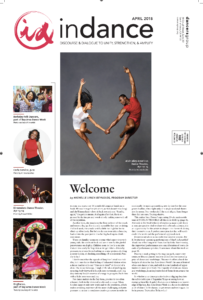 Picture the scene: my 16 month old daughter hands me a book. We read it together (it’s short, so that doesn’t take long) and she’ll immediately shove it back towards me. “Read it, again,” the gesture means. And again after that. She is engrossed by the images and words slowly making sense with all of the repetition.
Picture the scene: my 16 month old daughter hands me a book. We read it together (it’s short, so that doesn’t take long) and she’ll immediately shove it back towards me. “Read it, again,” the gesture means. And again after that. She is engrossed by the images and words slowly making sense with all of the repetition.
Another time, she stands on the floor in front of the couch and tosses a leg up. She clumsily scrambles her way to sitting. It’s hard work; the couch is still a little too high for her to climb up effortlessly. But before she can even take a breathe, back down she goes just to toss her leg back up to climb once more.
These are familiar scenes to anyone who’s spent time with young kids. We adults sit back and are at awe by the gleeful perseverance on display. Children seem to live by a maxim that can too easily be forgotten as we get older – driven by pressures to always be embarking on a new project, climbing a career ladder, or checking something off as mastered. Practice is fun!
I don’t remember the squeals of laughter I cried as a toddler, but I sure know that feeling of exhausted elation when a dance teacher calls out “One more time!” at the end of a class. The music turns up, I laugh at the idea of pushing my sweating body forward to launch into movement, and I dig deep into my body’s reserves of energy to go again. Each time with a little more ease and joy.
For dance-makers in the Bay Area, practice is too often a luxury, both in the rehearsal studio and on stage. Many funders support only new work and world premieres, which makes revisiting repertory all the more challenging and puts pressure on artists to condense creative processes in order to continually be making something new in time for the next grant deadline. One-night only or a single weekend shows are the norm. Two weekends if the stars aligns. Runs longer than that are rare. Touring elusive.
This makes Sean Dorsey’s upcoming 20-city nationwide tour of BOYS IN TROUBLE all the more thrilling. Not only is the work’s theme of exploring masculinity from a trans perspective vital to share with a broad audience, it is an opportunity for the artists to deepen into the work during their extensive tour. A performance practice that will surely evolve the work and the performers’ approach to it.
Dorsey is not alone in his multi-year creative process. Avy K Productions’ upcoming performances of Ruah Aduma/Red Wind also reflect long-term focus. Led by Erika Tsimbrovsky, the improvised performances are a manifestation of over a decade of performance practice. Learn more about this work.
Prior to a work getting to the stage (or park, community center, or library) dancers hustle to afford the ever-increasing price of classes and workshops. This month offers a break for budgets: it’s time for Bay Area Dance Week. The annual festival of no-cost dance is here, and with it come hundreds of opportunities to move your body. The majority of events are classes and workshops, in an impressive list of forms from around the world.
So whether your dance practice is about digging deep into the subtle technique of Argentine Tango or seeing how an emerging form like Angola’s Kuduro could inform your knowledge of hip hop, Bay Area Dance Week is a chance to celebrate a life of dance. To be clumsy. To get sweaty and try it again. To be in process. To practice. To have fun!
This article appeared in the April 2018 edition of In Dance.


